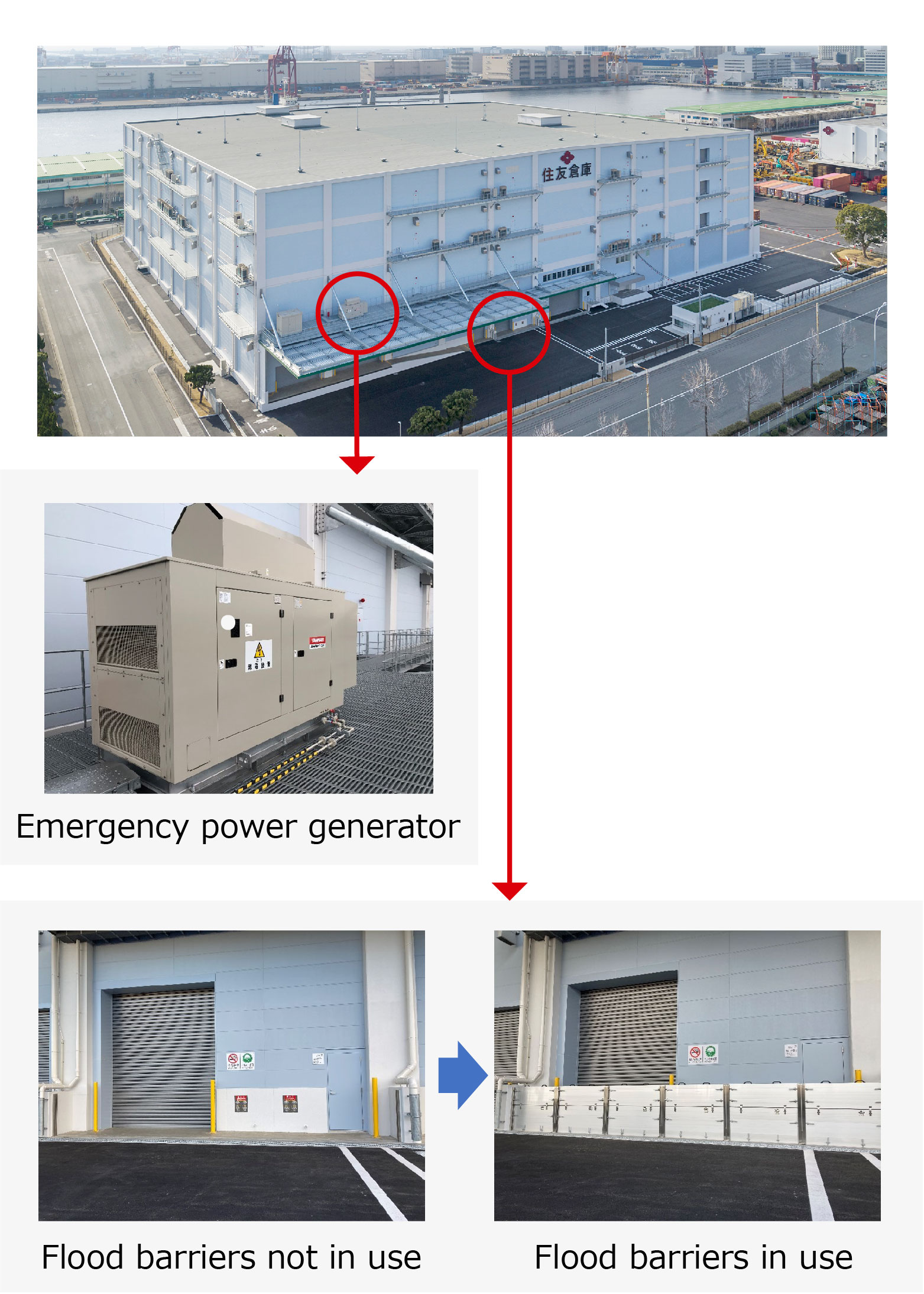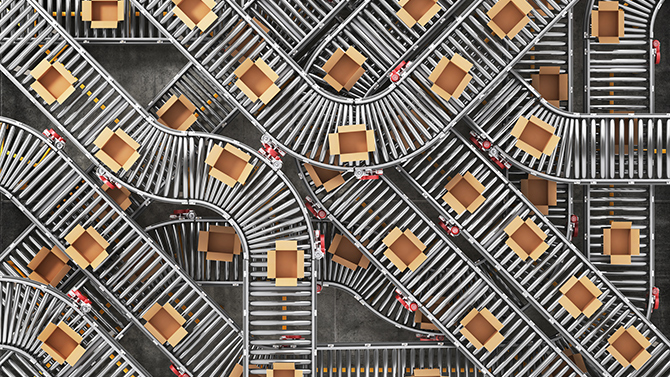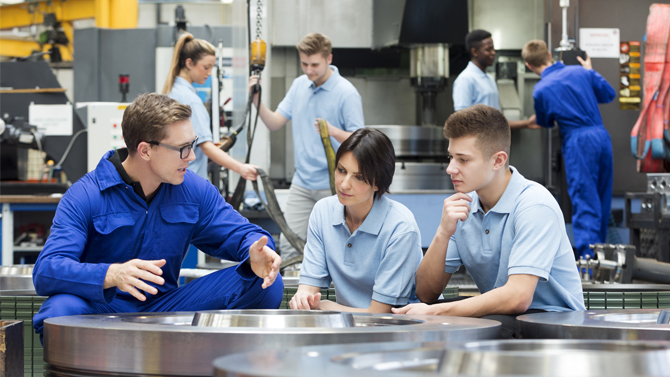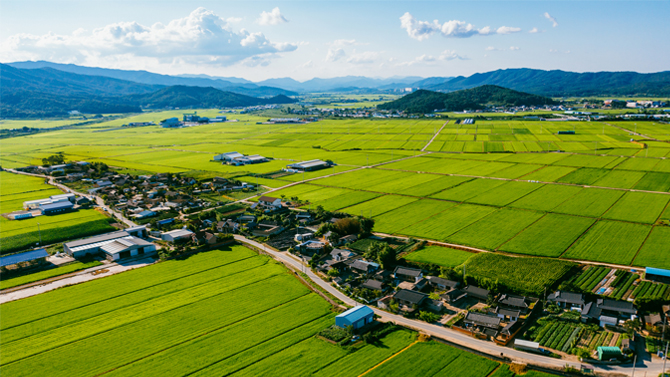Social Issues addressed by Sumitomo —Compass for the Future—
Environmentally friendly, disaster-resistant warehouses help maintain customers’ supply chains
 Climate change
Climate change Supply chain
Supply chainNatural disasters have wrought havoc in recent years and their frequency and severity have been trending upward. Disasters caused by extreme weather events range from rivers bursting their banks and landslides triggered by torrential rain to the inundation of littoral areas by typhoon-powered tidal surges that overwhelm coastal defenses. The menacing backdrop to these natural disasters that threaten the continuity of daily life and hammer the economy is climate change driven by global warming. Therefore, in order to reduce greenhouse gas (GHG) emissions, which are considered to be one of the chief culprits responsible for climate change, the international community is implementing various countermeasures. And across industry, initiatives to mitigate or avert climate change-related risks are essential.
Long before Sumitomo Warehouse formally established its environmental policy in 2006, the company had been endeavoring to reduce its environmental impacts, including through the promotion of a modal shift in freight transport systems from truck transportation to marine and rail transportation whose environmental impacts are lower. In recent years, the company has also been implementing measures to further enhance the disaster-resistance of its warehouses in order to maintain the integrity of customers’ supply chains despite the increasing frequency and severity of natural disasters in the context of ongoing climate change.
A new warehouse completed at Port Island in Kobe in January 2021 is the practical expression of the company’s stance on these matters. The warehouse is adjacent to the container terminal in the port area, which is a hub for international and domestic trade. As shipping companies’ shift to larger vessels so as to enhance the efficiency of marine transport, the cargo volume handled per port call is rising. Hence, the growing need for logistics facilities capable of handling ever-larger cargo volumes.
The new warehouse in Kobe is the practical expression of Sumitomo Warehouse’s commitment to safeguarding cargo, that is, customers’ assets, and maintaining supply chains by mitigating the risk of damage attributable to natural disasters.

The experience of the Great Hanshin Earthquake of 1995 prompted Sumitomo Warehouse to further strengthen its natural disaster countermeasures. When executing capital investment, the company always seeks to strengthen disaster preparedness. In 1996, the year following the earthquake, the company constructed a warehouse with a seismic isolation structure, the first such commercial warehouse in Japan. For the new warehouse at Port Island, the precast prestressed concrete (PCaPC) construction method was adopted, which offers greater earthquake resistance and durability than the conventional method. Moreover, greater emphasis is accorded to countermeasures for high winds and torrential rain and storm surges in the event of a typhoon.
Storm damage to warehouses usually starts at openings in the building that are exposed to wind and rain. The greater the number of openings, the less the resistance to storms. So, openings are kept to a minimum in this warehouse and shutters installed at the openings have greater wind resistance than conventional ones.
As countermeasures for storm surges, the floor height of the cargo handling and storage areas on the warehouse’s first floor is raised and the entrance at ground level is equipped with flood barriers. Anticipating the possible cessation of the external power supply in the event of a disaster, the warehouse has its own emergency power generator that is automatically activated if that happens, so that the warehouse’s basic functions are maintained for 72 hours even if the external power supply is lost. The emergency power generator is installed on the second floor as a precaution in case of flooding.


For its reduction of GHG emissions as a climate change countermeasure, the company has obtained Class A ratings for its warehouses under the Comprehensive Assessment System for Built Environment Efficiency (CASBEE), a method for evaluating and rating the environmental performance of buildings and the built environment. The design of the warehouse at Port Island focuses on minimizing CO2 emissions. Since electricity accounts for over 90% of the energy for air conditioning equipment to maintain a constant temperature in the warehouse and for the forklifts handling cargo, reducing their power consumption translates into substantial reductions in CO2 emissions. The warehouse is designed to curb power consumption. Measures include adoption of equipment with superior energy-saving performance and a layout such that zones requiring air conditioning are located at the north-facing side of the building where insolation is relatively low.
Further cuts in CO2 emissions are secured by enhancing the cargo handling efficiency. A vehicle pathway is laid out at the center of the first floor of the warehouse. Loading bays and cargo elevators are positioned such that the distance travelled by forklifts is minimized. Having a vehicle pathway and loading bays indoors means high wind and heavy rain have minimal impact on operational efficiency and trucks’ idle time is reduced. Shorter idle time means lower CO2 emissions because trucks carrying temperature-controlled cargo have to keep their engines running while marking time. In addition, a truck berth booking system has been introduced to stagger truck arrival times.
Besides these initiatives in terms of equipment and design, Sumitomo Warehouse is also emphasizing ingenuity in logistics, such as the promotion of modal shift. For transport of empty containers to be used for export cargo, the company adopts not only one-by-one land transport by truck but also marine transport by barge. In addition, the company is proposing container round use to its customers, that is, devanned containers used for import are then used for export without returning them to the shipping company, an approach that reduces CO2 emissions during transport.
Going forward, Sumitomo Warehouse is committed to helping achieve a sustainable society by making its logistics facilities resilient to natural disasters while minimizing environmental impacts through the pursuit of operational efficiency of each process, from warehouse storage to transport, as well as greater reliance on renewable energy.


Read about initiatives to achieve a low-carbon society, aiming at net-zero greenhouse gas emissions since these emissions are implicated in global warming.

In view of ongoing globalization and the growing complexity of supply chains, companies need to respond appropriately to issues in supply chains.

The pace of workstyle reform is accelerating as the COVID-19 pandemic has prompted numerous companies to embrace novel ways of working.

For companies, the COVID-19 pandemic has brought the crucial importance of employee health into sharp focus.

Accelerating global warming poses serious business risks. Accordingly, companies need to formulate strategies and implement specific countermeasures from a medium- to long-term perspective.

Spurred by efforts to reduce environmental impacts and in line with increasing social needs, replacement of gasoline-powered vehicles with electric vehicles is accelerating.

Vigorous initiatives are afoot to tackle social issues by revitalizing communities and the interpersonal relationships that bind them together.

Poverty persists in contemporary Japan and the existence of child poverty is a grave concern.

In view of the continuing decline of Japan’s working age population, due to population aging coupled with a low birthrate, development of the next generation is an urgent issue.

The rapid progress in medicine in recent years is largely due to the efforts of not only universities and other research institutions but also of companies to develop cutting-edge technologies.

Numerous initiatives to promote industry and commerce at the regional and community level are underway, involving the use of renewable energy and thus contributing to decarbonization.

One-third of food produced is lost or wasted globally, amounting to about 1.3 billion tons per year. Food loss and waste is a pressing issue in need of a solution.

Companies are addressing a wide range of issues so that people and companies can coexist in harmony with the global environment.

In addition to natural disasters, there are various types of hazards whose nature, incidence and severity are changing with the times. Resilience and flexibility are indispensable in dealing with them.

Read about initiatives to achieve sustainable regional revitalization. The attributes and resources that each region can offer are leveraged to strengthen local economies and overcome the problem of population decline.